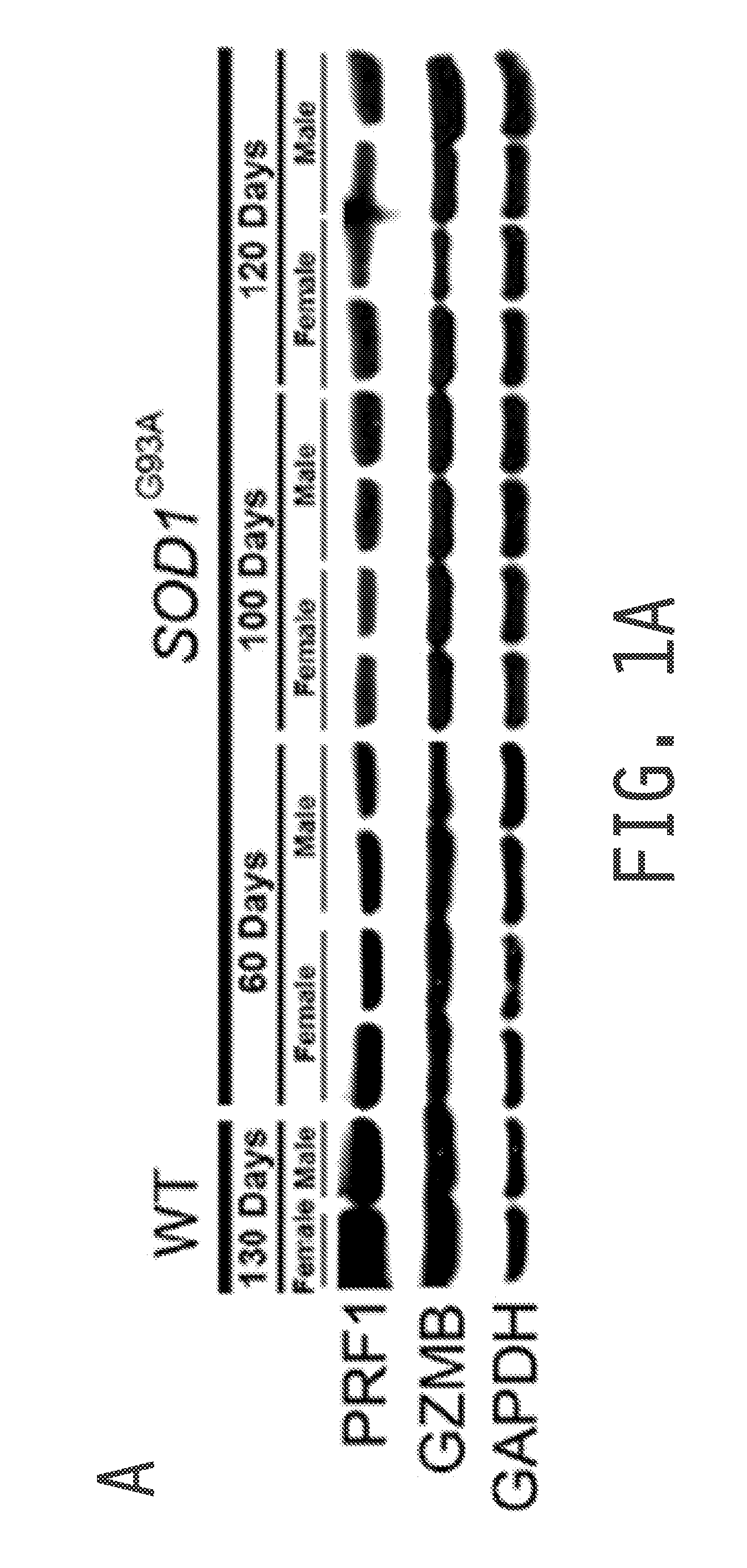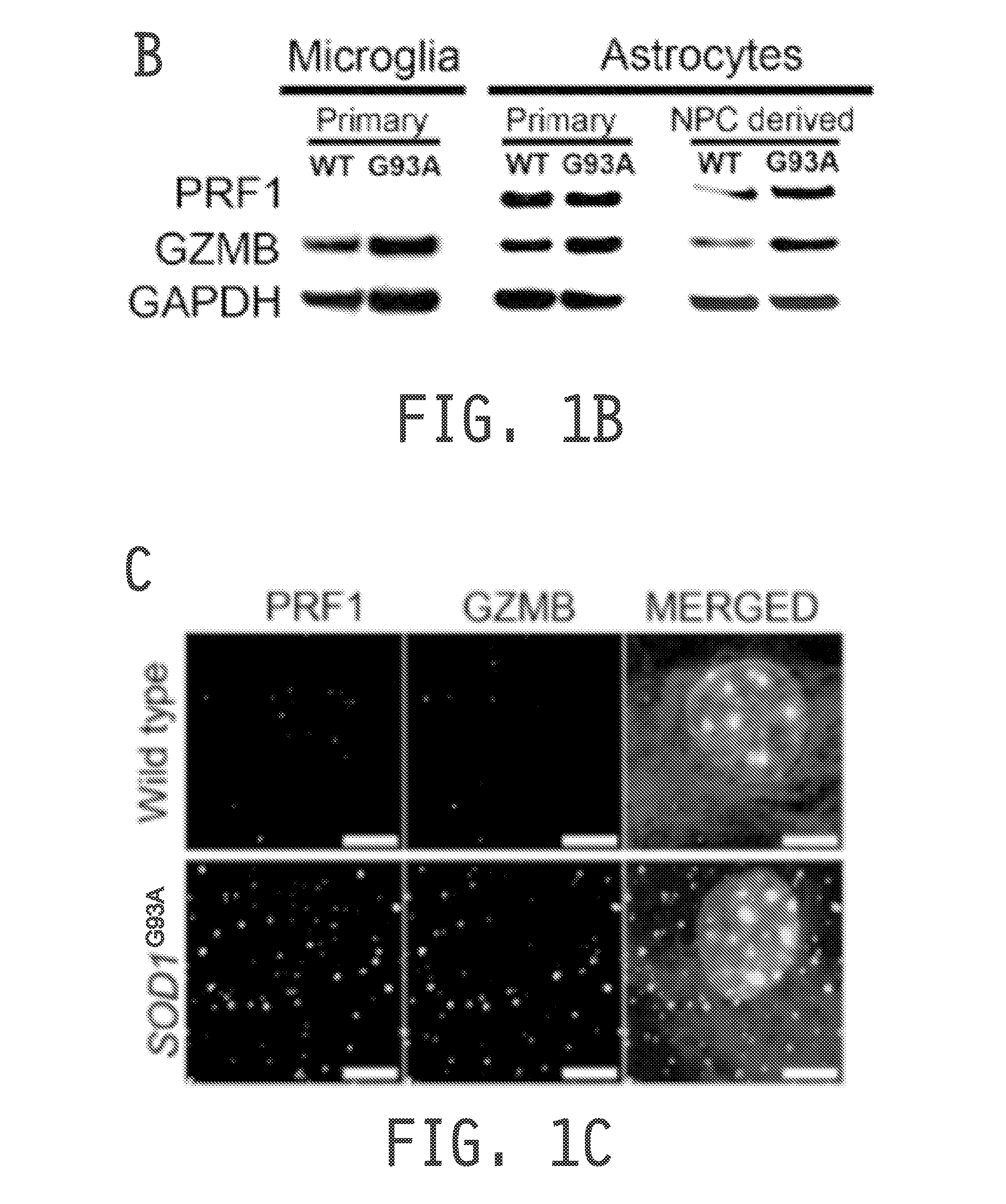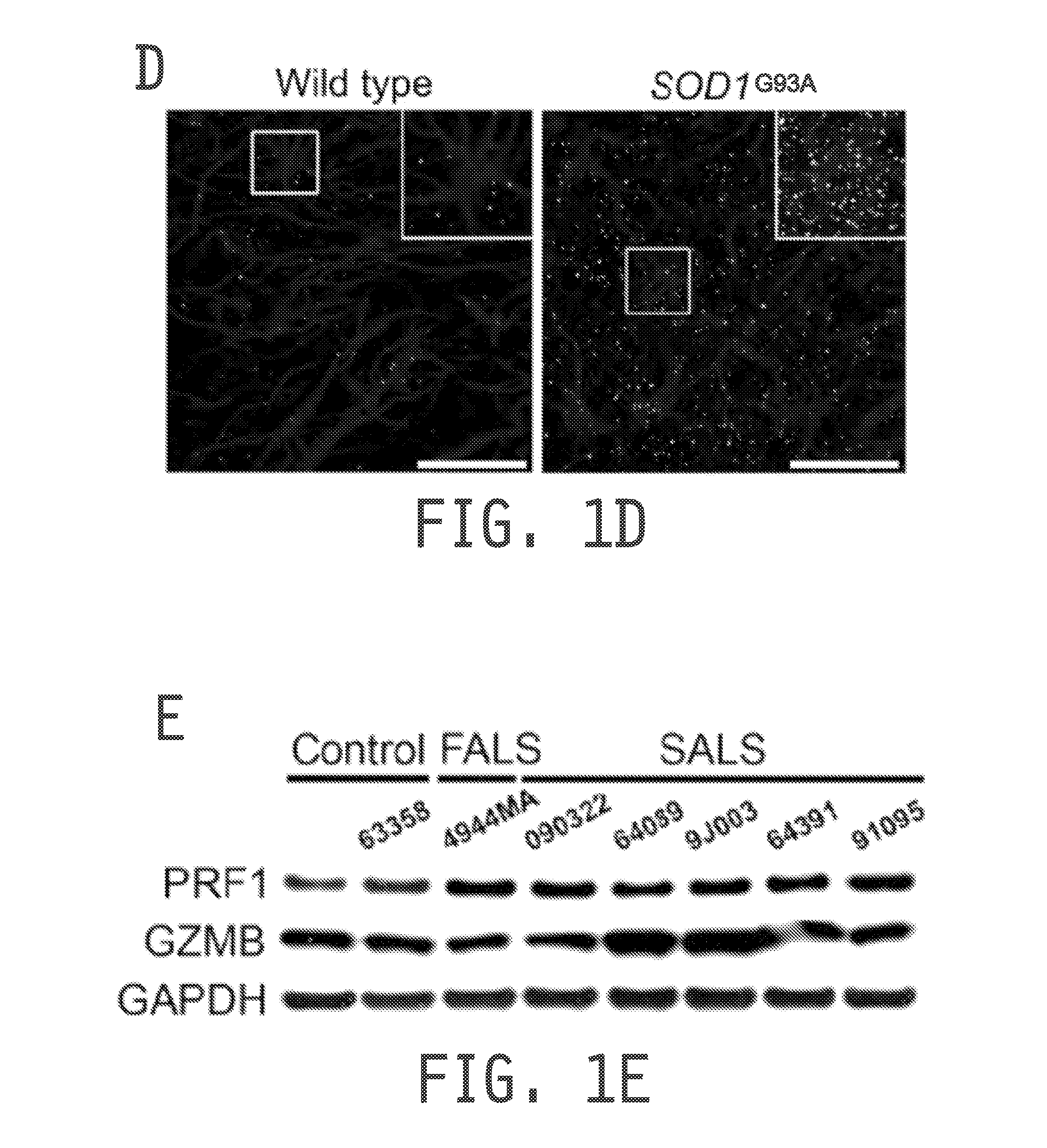Compositions and methods for treating amyotrophic lateral sclerosis
a technology amyotrophic lateral sclerosis, applied in the field of amyotrophic lateral sclerosis treatment, can solve problems such as respiratory failure death, achieve the effects of increasing the number of motor neurons, decreasing the number of soma atrophy, and increasing the length of neurites
- Summary
- Abstract
- Description
- Claims
- Application Information
AI Technical Summary
Benefits of technology
Problems solved by technology
Method used
Image
Examples
example 1
ALS Astrocytes Express and Show Increased Co-Localization of the Cytoplasmic Granule Toxins Perforin and Granzyme
[0220]Cytoplasmic granule toxins of the granule exocytosis pathway comprise perforin (e.g., PRF1), a membrane-disrupting protein, and granzymes, a family of structurally related serine proteases with cytotoxic activity, of which granzyme B (GZMB) is an example and has been identified as potent pro-apoptotic factor. The present example analyzed if cytolytic compounds of the granule cell death pathway are expressed in cells of the spinal cord. As shown in FIG. 1A, both PRF1 and GZMB protein were readily detected in spinal cords of wild type and SOD1G93A mice (an accepted animal model for amyotrophic lateral sclerosis (ALS)) by Western blot analysis, and the presence of transcripts was confirmed by RT-PCR. Global expression levels of PRF1 or GZMB did not change with disease progression in SOD1G93A mice (FIG. 1A).
[0221]As both astrocytes and microglia exhibit cytotoxicity tow...
example 2
ALS Astrocytes Release Perforin and Granzyme B into Motor Neurons
[0224]This example investigated whether SOD1G93A astrocytes have the ability to release PRF1 and GZMB into MNs by using an in vitro culture system to demonstrate the toxicity of astrocytes towards co-cultured MNs. MNs were derived from mES cells expressing GFP under the control of the motor-neuron specific HB9 promoter, permitting visual distinction of MNs and astrocytes in co-cultures. In MNs cultured on a confluent layer of astrocytes isolated from SOD1G93A mice, cytosolic and membrane-associated PRF1 and GZMB protein were visualized as early as 24 hours after plating, while MNs co-cultured with wild type astrocytes did not exhibit any signal at this time point. This difference was maintained over the time course of co-culture, leading to substantial accumulation of PRF1 and GZMB protein in MNs cultured on top of SOD1G93A astrocytes after 120 hours of culture, whereas both proteins remained essentially absent from MN...
example 3
Perforin and Granzyme B are Specifically Found in Motor Neurons of Human ALS Spinal Cords
[0229]Consistent with outcomes in the mouse model, substantial amounts of PRF1 and GZMB were detected in MNs of the spinal cord of FALS and SALS patients but not in unaffected controls (see FIG. 3A). Quantitative analysis of the number of MNs positive for PRF1 or GZMB in human spinal cord demonstrated a high prevalence of positive MNs in both FALS and SALS, with up to 100% of cells containing both proteins in several samples (see FIGS. 3B and 3C). These observations, derived from in vitro co-culture systems of ALS astrocytes with MNs and from both murine and human ALS spinal cords, suggest that ALS astrocytes actively degranulate PRF1 and GZMB, followed by perforin-mediated uptake of these cells into MNs.
PUM
| Property | Measurement | Unit |
|---|---|---|
| Length | aaaaa | aaaaa |
Abstract
Description
Claims
Application Information
 Login to View More
Login to View More - R&D
- Intellectual Property
- Life Sciences
- Materials
- Tech Scout
- Unparalleled Data Quality
- Higher Quality Content
- 60% Fewer Hallucinations
Browse by: Latest US Patents, China's latest patents, Technical Efficacy Thesaurus, Application Domain, Technology Topic, Popular Technical Reports.
© 2025 PatSnap. All rights reserved.Legal|Privacy policy|Modern Slavery Act Transparency Statement|Sitemap|About US| Contact US: help@patsnap.com



